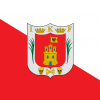Империята Бенин.
-
Последна активност
-
Руско-украинската война 2022-2024 година. 1 2 3 4 190
От Р. Теодосиев, in Руско-украинската война 2022 година.
- 4729 мнения
- 362219 прегледa
-
- 3165 мнения
- 260728 прегледa
-
- 2712 мнения
- 246228 прегледa
-
- 19 мнения
- 923 прегледa
-
- 562 мнения
- 73538 прегледa
-
-
Последно разглеждащи 0 Потребители
- No registered users viewing this page.




Препръчано мнение